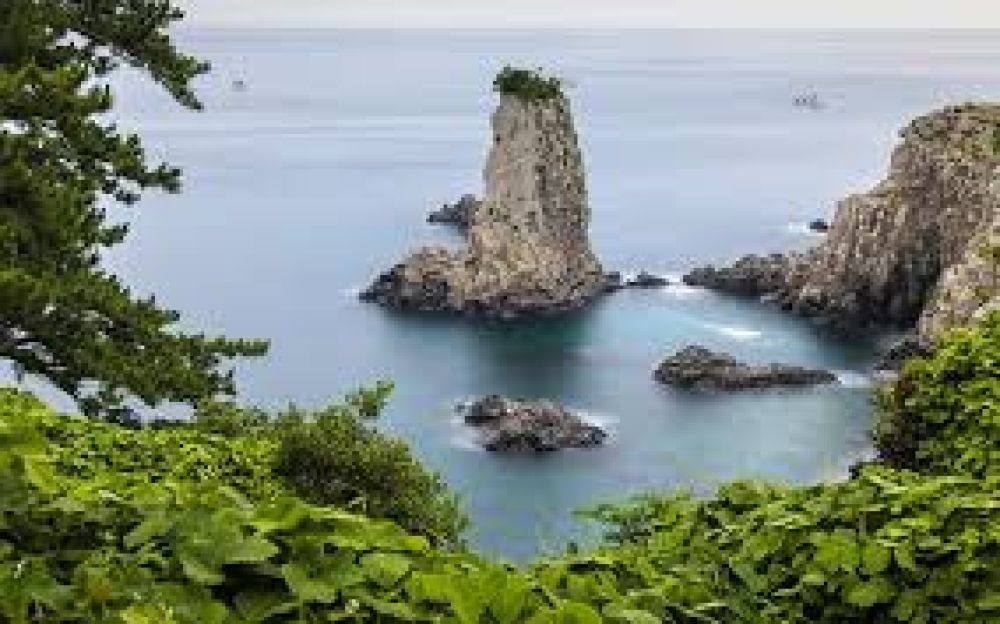

Situated on the enchanting island of Jeju, Oedolgae Rock stands as a sentinel off the southern coast of the Korean Peninsula. Its name translates to "Lonely Rock," due to its solitary position amidst the waves. This stunning volcanic rock formation, approximately 20 meters in height, is a testament to Jeju's volcanic origins and a symbol of the island's natural beauty.
The history of tourism at Oedolgae Rock is intrinsically linked to the broader development of Jeju Island as a travel destination. Initially known more to the local fishing communities and inhabitants, the rock became a tourist attraction as the scenic value of Jeju Island gained wider recognition.
After the Korean War, Jeju Island began to blossom as a domestic travel destination, with South Koreans seeking the serene beauty and unique culture of the island. In 1971, Jeju Island was designated as a National Tourist Zone, and this marked the beginning of a concerted effort to develop its tourist infrastructure.
Oedolgae Rock, with its majestic presence, became a natural point of interest. Its fame surged after being featured as a backdrop in the popular Korean television drama "Dae Jang Geum" (Jewel in the Palace) in the early 2000s. Since then, it has secured its spot as one of the must-visit attractions on the island, drawing visitors enticed by its appearance in Korean popular culture and its stunning natural setting.
In recent years, Jeju Island, and by extension Oedolgae Rock, has witnessed a shift in tourism trends. While the site continues to be a favorite among domestic travelers, there has been a significant increase in international visitors, thanks in part to Jeju's visa-free status for 180 countries. This has diversified the tourism landscape, creating a modern, international feel on the island.
Eco-tourism is another burgeoning trend, with travelers increasingly seeking out natural wonders and engaging in sustainable tourism practices. Oedolgae Rock has benefited from this trend, with visitors attracted to the hiking trails around the rock, bird watching opportunities, and the chance to explore the local marine life through snorkeling and diving activities.
Additionally, Jeju's reputation as a UNESCO World Heritage Site has bolstered its appeal among cultural and nature enthusiasts. Oedolgae Rock contributes to this appeal with its proximity to other natural treasures of the island, such as Hallasan Mountain and the Jeju Volcanic Island and Lava Tubes system.
Social media has also influenced the evolving tourism trends. Picturesque spots like Oedolgae Rock are frequently featured on platforms like Instagram, attracting the younger demographic who are keen to share their travel experiences and inspiring a wave of "Instagram tourism."
Throughout its tourism evolution, Oedolgae Rock has maintained its status as a beloved natural landmark. With the ongoing development of the tourism sector in Jeju, the rock continues to captivate visitors from around the world while promoting a balance between preserving its natural beauty and accommodating the growing visitor interest.